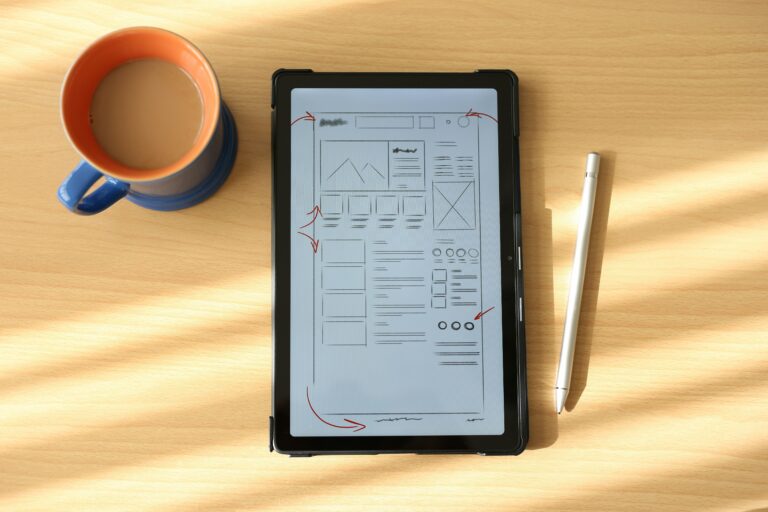What is a multi-generational workforce?
The presence of a multi-generational workforce is more prevalent than ever before. A multi-generational workforce is a dynamic and diverse environment in which employees from different age groups, often spanning several generations, collaborate and contribute to business goals.
It encompasses the generations including the Silent Generation (born 1928-1945), Baby Boomers (born 1946-1964), Generation X (born 1965-1980), Millennials (born 1981-1996, also known as Generation Y), and Generation Z (born 1997 onwards). This diverse mix of employees brings unique experiences, values, communication preferences, and work styles to the workplace.
If you are an employer looking for help with succession planning, skills mapping and recruitment, contact us today.
Importance of managing generational diversity
Managing a multi-generational workforce is crucial for several reasons, as directly impacts a company’s competitiveness, innovation, and ability to thrive in a rapidly changing business landscape.
Relevance
In an era where retirement ages are increasing, the labour force is extending further into the older generations. This prolonged presence of older workers necessitates understanding their contributions and needs within the workforce.
Knowledge sharing
As Baby Boomers retire, there is a pressing need to transfer their valuable institutional knowledge to younger generations. Failure to do so can result in a loss of critical information and skills. Effective knowledge transfer ensures business continuity and sustainability.
Enhanced problem solving
Diverse teams often excel at problem-solving by considering various viewpoints. When managed effectively, a multi-generational workforce can address challenges more comprehensively.
Attracting and retaining talent
Attracting and retaining talent from various generations is essential for long-term success. Businesses that are perceived as inclusive and accommodating to all age groups are more likely to attract top talent. According to a PwC report, 86% of Millennials consider an employer’s diversity and inclusion policies when deciding where to work.
Consumer insights
Understanding the preferences and behaviours of different generations is vital for businesses to adapt to changing market dynamics. For instance, marketing strategies that appeal to Baby Boomers may differ significantly from those targeting Millennials or Gen Z. This adaptability is crucial in maintaining a competitive edge.
Succession planning
As older generations retire, organisations need to ensure a smooth transition of leadership and knowledge transfer to younger generations, preventing skill gaps and preserving institutional wisdom.
Legal and ethical considerations
Ensuring fairness and equity across all generations is not only a business necessity but also a legal and ethical obligation. Discrimination or bias based on age is prohibited in many countries, making it crucial for a company to actively manage generational diversity.
Workplace culture
Effective management of generational diversity can contribute to a positive workplace culture that promotes inclusivity, engagement, and employee satisfaction.
Managing generational diversity helps reduce intergenerational conflicts that can hinder teamwork and overall workplace harmony. Conflict resolution in a multi-generational workforce can lead to improved collaboration and communication.
What workplace culture is right for you?
Innovation and creativity
A diverse workforce composed of individuals from various generations can lead to enhanced creativity and innovation. Differing perspectives and life experiences can spark fresh ideas and approaches to problem-solving. According to a survey by Harvard Business Review, companies with diverse workforces are 45% more likely to report a growth in market share over the previous year.
Understanding generational differences
1. Silent Generation (born 1928-1945)
The Silent Generation, born between 1928 and 1945, grew up during a time of significant historical events such as World War II and the Great Depression. In the workplace, they are known for their strong work ethic, loyalty, and adherence to traditional values. They value stability and job security and often prioritise face-to-face communication.
2. Baby boomers (born 1946-1964)
Baby Boomers, characterised by their strong work ethic, loyalty, and dedication, have often followed traditional career paths. They value face-to-face communication, prioritise stability, and have accumulated extensive experience over their careers. They are often seen as mentors within the workforce.
3. Generation X (born 1965-1980)
Generation X values work-life balance, independence, and adaptability. They are known for their self-reliance, scepticism of authority, and entrepreneurial spirit. This generation seeks autonomy in their roles and values flexibility.
4. Millennials (born 1981-1996, Generation Y)
Millennials, having grown up in the digital age, emphasise work flexibility, diversity, and personal growth. They are tech-savvy and adept at leveraging technology for efficiency. Millennials often seek rapid career progression and purpose-driven work.
5. Generation Z (born 1997 onwards)
The youngest generation in the workforce, Gen Z, prioritises job security, work-life balance, and social responsibility. They are true digital natives, having grown up with technology at their fingertips. Gen Z values stability and seeks meaningful work experiences.
Multi-generational workforce: characteristics
1. Work ethic
- Silent Generation: Strong work ethic and loyalty to employers.
- Baby Boomers: Dedication and commitment to their careers.
- Generation X: Value work-life balance and adaptability.
- Millennials: Seek purpose-driven work and personal growth.
- Generation Z: Prioritise job security and social responsibility.
2. Communication styles
- Silent Generation: Prefer face-to-face communication and formal interactions.
- Baby Boomers: Value in-person meetings and written communication.
- Generation X: Comfortable with both traditional and digital communication methods.
- Millennials: Embrace digital communication and social media.
- Generation Z: Primarily use digital platforms and messaging apps.
3. Career expectations
- Silent Generation: Prioritise job stability and traditional career paths.
- Baby Boomers: Aspire to climb the corporate ladder and value experience.
- Generation X: Seek autonomy and value skill development.
- Millennials: Desire rapid career progression and personal growth.
- Generation Z: Look for opportunities that provide work-life balance and social impact.
4. Technology adoption
- Silent Generation: May require support with digital tools and technology.
- Baby Boomers: May have varying levels of tech proficiency but bring leadership experience.
- Generation X: Comfortable with technology, adapt to new tools, and bridge the digital gap.
- Millennials: Tech-savvy and quick to adopt new digital trends.
- Generation Z: True digital natives with an innate understanding of technology.
Challenges in managing a multi-generational workforce
Effectively managing a multi-generational workforce comes with its fair share of challenges, including:
Communication gaps
Bridging the communication gap between generations is a pervasive challenge. Misunderstandings can occur due to differing communication styles and preferences, leading to conflicts and inefficiencies.
Common scenarios for conflict:
- Misinterpreted messages: Generation X may interpret the brevity of a Millennial’s text message as dismissive, while the Millennial sees it as efficient communication.
- Resistance to technology: Baby Boomers may resist adopting new communication tools, causing frustration for younger colleagues reliant on digital channels.
Additional challenges: Overcoming language barriers in a global workforce and addressing varying preferences for formal or informal communication.
Conflicting work styles
Generational differences in work styles can lead to conflicts over expectations for job roles, responsibilities, and work processes. These conflicts can hinder teamwork and productivity.
Common scenarios for conflict:
- Work hours: Baby Boomers may expect employees to adhere to traditional office hours, while Millennials may prefer flexible schedules.
- Decision-making: Generation X may value autonomy in decision-making, leading to disagreements with Baby Boomers who prefer hierarchical decision structures.
Additional challenges: Balancing remote work preferences, managing expectations around workloads, and addressing differences in work ethics.
Differing motivations and expectations
Understanding what motivates each generation is essential for employee engagement. A one-size-fits-all approach to motivation may not be effective, leading to decreased job satisfaction and performance.
Common scenarios for conflict:
- Recognition preferences: Millennials may expect frequent feedback and public recognition, while Baby Boomers may value annual bonuses and private praise.
- Career advancement: Gen Z employees seeking rapid progression may become frustrated if they perceive limited opportunities due to longer-tenured Baby Boomers.
Additional challenges: Balancing intrinsic and extrinsic motivations, aligning individual career goals with business objectives, and addressing differing expectations around job security.
Discover 18 employee recognition strategies
Stereotypes and bias
Stereotypes and biases about different generations can hinder collaboration, perpetuating negative assumptions and creating a hostile work environment.
Common scenarios for conflict:
- Age discrimination: Younger employees may believe that their ideas are dismissed because of their age, while older employees may feel side-lined due to perceived obsolescence.
- Blame: Different generations may blame each other for workplace issues, such as low morale or technological setbacks.
Additional challenges: Addressing unconscious bias, promoting diversity and inclusion, and creating awareness of generational stereotypes.
Resistance to change
Different generational groups may vary in their readiness to embrace organisational changes, making it challenging to implement new policies, technologies, or practices.
Common scenarios for conflict:
- Technological upgrades: Baby Boomers may resist new software implementations, citing a steep learning curve, while younger generations may see these changes as improvements.
- Workplace policies: Introducing flexible work arrangements may face resistance from older generations who are accustomed to traditional office structures.
Additional challenges: Navigating resistance to innovation, maintaining morale during transitions, and ensuring that change benefits all generations.
Other challenges in a multi-generational workforce
Different learning styles: Baby Boomers may prefer structured training programs, while Millennials may favour on-the-job learning. What are the benefits of training your employees?
Workplace benefits: Conflicts may arise when different generations have varying expectations regarding benefits, such as healthcare, retirement plans, or parental leave.
Leadership styles: Differences in leadership approaches may create tensions, especially when younger employees supervise older ones.
Feedback and recognition: Generational variations in feedback preferences and expectations can lead to misunderstandings and job dissatisfaction.
Remote work arrangements: Remote work can be a point of contention, with some generations preferring the traditional office setting and others advocating for flexible arrangements.
Strategies to manage a multi-generational workforce
To successfully manage a multi-generational workforce, businesses must implement strategies that embrace diversity and foster a collaborative and productive environment. Some examples include:
Foster inclusive work environments
Why?
Creating an inclusive environment ensures that employees from all generations feel valued and heard.
Impact:
Inclusivity fosters a sense of belonging, which can boost morale, improve collaboration, and enhance overall job satisfaction.
Implementation:
- Establish open-door policies that encourage employees to voice concerns and ideas.
- Encourage cross-generational mentorship and reverse mentoring programs.
- Develop guidelines for respectful communication and behaviour.
Common issues:
- Avoid tokenism; ensure genuine inclusion rather than surface-level diversity.
- Monitor for any signs of generational cliques or exclusionary behaviour.
- Continuously assess and refine inclusivity initiatives to remain effective.
Resource: Harvard Business Review – Why diverse teams are smarter
Leverage generational strengths
Why?
Recognising and harnessing generational strengths promotes collaboration and knowledge transfer.
Impact:
This strategy enables organisations to maximise productivity and innovation by capitalising on the unique skills and experiences of each generation.
Implementation:
- Implement cross-generational project teams to leverage diverse strengths.
- Create platforms for knowledge sharing and transfer.
- Encourage older employees to serve as mentors for younger ones.
Common issues:
- Ensure that strengths-based initiatives do not reinforce stereotypes.
- Balance recognition of strengths with opportunities for growth and development.
Resource: PwC – Millennials at Work
Provide development opportunities
Why?
Offering development opportunities ensures that all generations can acquire the skills necessary for success.
Impact:
Employees who feel invested in are more likely to remain engaged and committed to the business.
Implementation:
- Offer training programs that cater to various learning styles and preferences.
- Create a culture of continuous learning and growth.
- Establish mentorship and coaching programs to support career progression.
Common issues:
- Avoid one-size-fits-all training approaches; tailor programs to individual and generational needs.
- Ensure accessibility to professional development opportunities for all employees.
Resource: Deloitte – Learning in the Flow of Life
Flexible work arrangements
Why?
Flexible work arrangements accommodate diverse generational needs and preferences.
Impact:
Offering flexibility enhances work-life balance, job satisfaction, and employee retention.
Implementation:
- Implement flexible scheduling options, including remote work opportunities.
- Create guidelines for remote work, setting clear expectations.
- Establish a culture of trust, focusing on results rather than hours worked.
Common issues:
- Maintain clear communication channels to prevent feelings of isolation among remote workers.
- Ensure equitable access to flexible arrangements across generations.
Resource: Stanford – Working From Home Will Be the New Normal
Feedback and recognition
Why?
Tailored feedback and recognition cater to individual generational preferences, increasing motivation and engagement.
Impact:
Effective feedback and recognition can boost morale, improve performance, and enhance overall job satisfaction.
Implementation:
- Encourage managers to understand and adapt their feedback styles.
- Establish regular feedback mechanisms, including one-on-one meetings.
- Recognise achievements publicly, tailored to generational preferences.
Common issues:
- Avoid favouritism or bias in recognition practices.
- Ensure feedback is constructive and actionable, promoting growth.
Resource: Gallup – Why Great Managers Are So Rare
Best practices for multi-generational leadership
One valuable strategy is to conduct generational workshops and training sessions that help employees gain insights into the work styles and preferences of different generations, fostering empathy and understanding. This increased awareness leads to reduced stereotypes and biases, improved communication, and more effective teamwork. Companies can collaborate with experts or utilise online resources to design engaging workshops and encourage open discussions.
Another approach is to offer flexibility in project assignments, allowing employees to choose projects that align with their strengths and interests. This not only enhances job satisfaction but also results in improved project outcomes and a more harmonious work environment. Managers can establish a system where employees can express their project preferences, empowering them to take ownership of their work.
Cross-generational brainstorming sessions provide yet another avenue for leveraging generational diversity. By bringing employees from different generations together to solve problems and generate innovative ideas, businesses can boost creativity, improve problem-solving, and foster a stronger sense of collaboration. Regularly scheduled brainstorming sessions that include representatives from all generations within the organisation are essential to the success of this strategy.
Creating a dedicated Generational Diversity Task Force is a structured approach to managing generational diversity. This task force is responsible for ongoing assessment, planning, and implementation of strategies to address generational challenges proactively. By recruiting employees from various generations to serve on this team, organisations can ensure a comprehensive and inclusive approach to managing generational diversity.
Lastly, hosting intergenerational networking events provides opportunities for employees to connect informally, build relationships, and learn from one another. These events encourage interactions between employees from different generations outside of their typical work roles, leading to strengthened intergenerational relationships, improved communication, and a more cohesive workforce.
Summary
By addressing the challenges and implementing the strategies and best practices outlined in the blog, businesses can unlock the full potential of their multi-generational workforce, driving innovation and sustained success in the competitive business landscape.
If you require recruitment help for your business across product management, marketing, eCommerce or Commercial leadership, contact us today.




